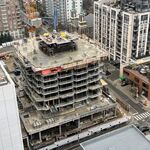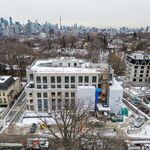umm. Our bridge just celebrated it's centnennial:
https://en.wikipedia.org/wiki/Prince_Edward_Viaduct
The next "big" bridge that may actually get built in Toronto likely won't even carry cars - it'll probably carry subway trains over the Don Valley as part of the DRL North. I wouldn't be surprised if it ends up as a cable stay bridge.
There are lots of nice big bridges in Ontario, but most of them are border bridges, so I feel like most people don't get to experience them regularly. The "biggest" domestic bridge is probably the Burlington Skyway.. but Ontario has a ton of big bridges once you count border bridges:
Peace Bridge
Rainbow Bridge
Ambassador Bridge
Burlington Skyway
Queenston Lewiston Bridge
Garden City Skyway
Bluewater Bridge
Thousand Islands Bridge
Odgensburg-Prescott International Bridge
Seaway International Bridge
Sault Ste Marie International Bridge
Plus the under construction Gordie Howe Bridge..


















